How to Care for the Skin Around Your Eyes
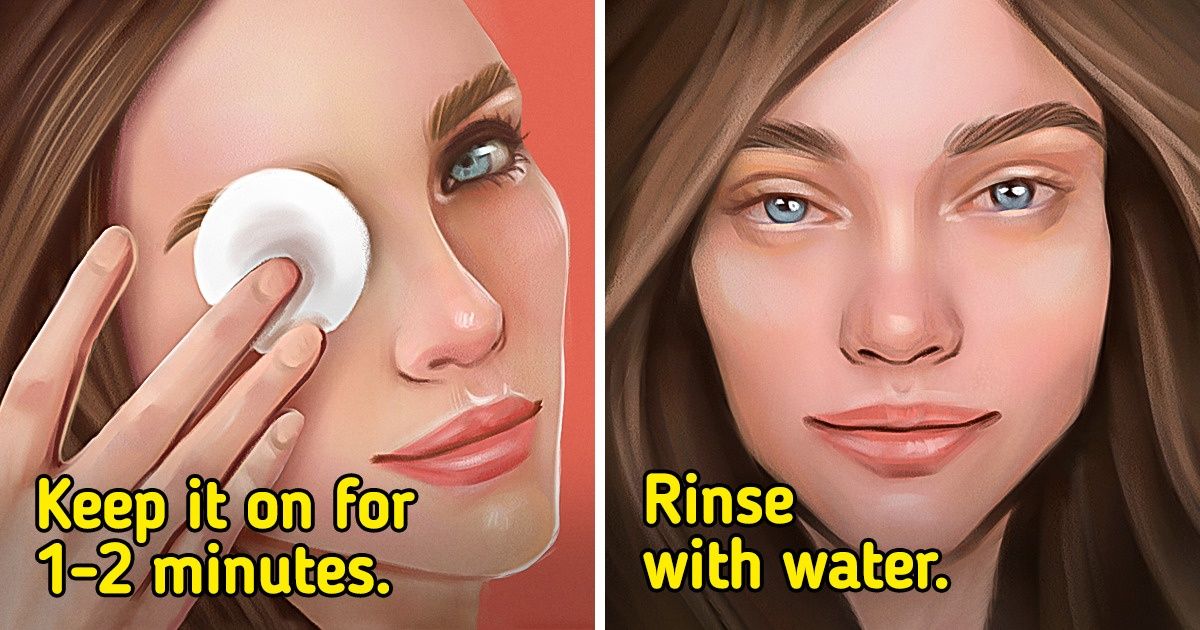
Cosmetologists often outline the skin around the eyes as a separate area of care. Unlike the rest of the skin on the human body, it’s thinner, more sensitive, and has almost no sebaceous glands. Therefore, this area of the skin needs additional moisture and is prone to the early appearance of wrinkles.
5-Minute Crafts is telling you how to properly take care of the area around the eyes, starting from removing makeup and general care to the correction of visible imperfections.
Makeup removal
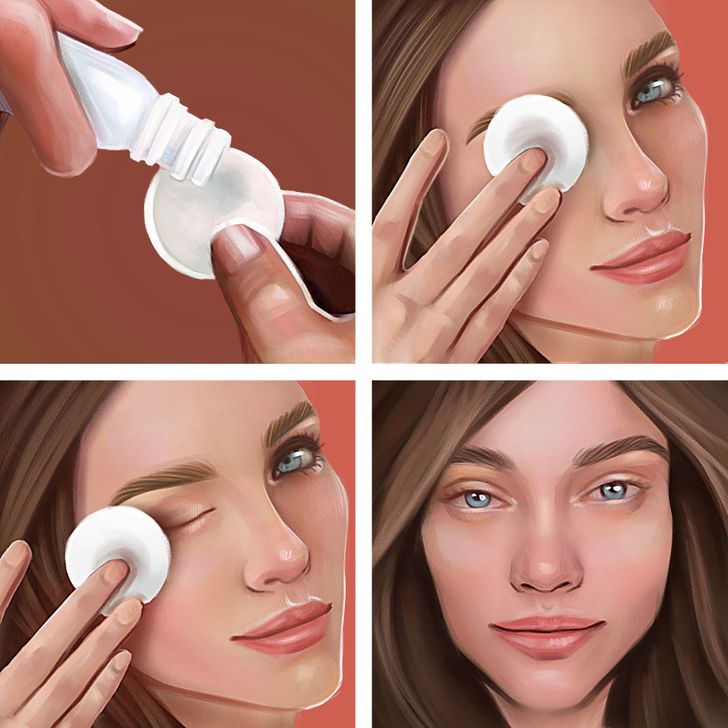
If you wear makeup, it’s necessary to remove it with the help of a special remover. Make sure it’s hypoallergenic, ophthalmologically tested, and suitable for the sensitive skin around the eyes. If you use waterproof mascara, opt for a remover suitable for waterproof makeup.
In order to remove makeup from the eyelids, take a cotton pad, soak it in the remover, close your eye, and apply the pad to it. Keep it there for 1-2 minutes, then gently remove the leftovers of the cosmetics with the help of the pad. Repeat the same procedure with the other eye and rinse the face with clean water.
Caring for the skin around the eyes
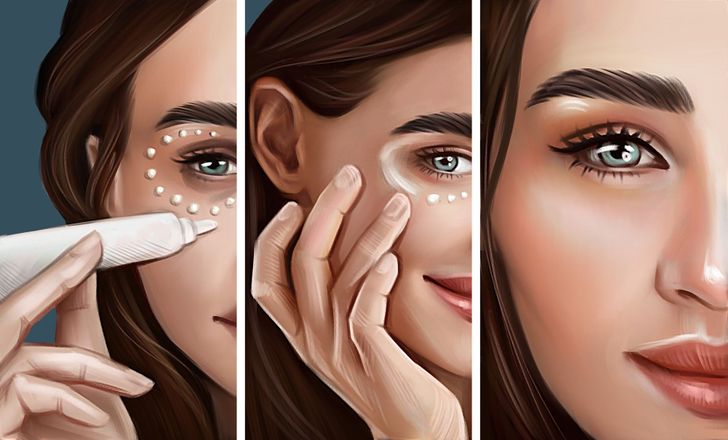
As a rule, regular cream is not suitable for the skin around the eyes. It’s too thick and contains an excess amount of active components. Using it can result in the appearance of puffiness and irritation under the eyes. In order to avoid unnecessary reactions, get a special cream designed for the skin around the eyes. It can be a simple moisturizing cream or a cream for helping with certain issues in this area. Some examples of these are:
- A light gel with caffeine or green tea to eliminate puffiness and dark circles
- A cream with vitamin C to strengthen blood vessels and prevent the first wrinkles
-
A hyaluronic acid cream for deep hydration of dehydrated skin around the eyes
-
A cream with retinol or peptides for deep wrinkle correction
Eye cream should be applied in the morning and in the evening, 1-2 hours prior to sleep. First, remove any makeup, wash your face, squeeze some cream out onto your ring finger, and apply it along the orbital bone line with patting movements. Apply the cream to the upper lid if necessary. Then wait for 1-2 minutes to let the cream or gel get absorbed by the skin and apply the appropriate cream to the rest of your face.
Masks, patches, and compresses
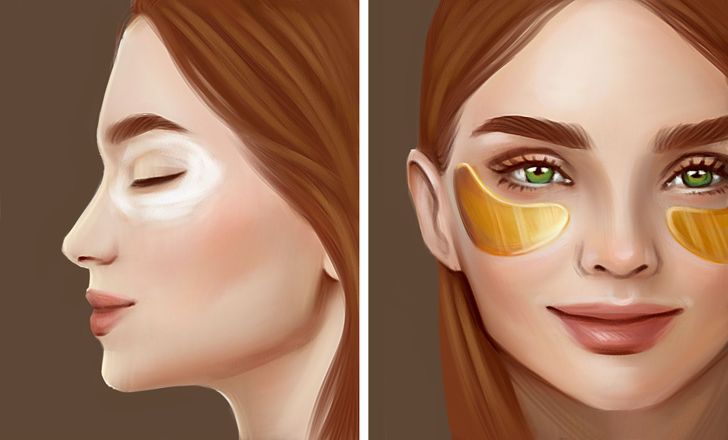
Cream alone is oftentimes not enough when it comes to solving certain issues. That’s when masks or hydrogel patches and compresses boasting a special composition come to the rescue. They usually contain the same ingredients as eye creams but at a higher concentration.
Use special products only if necessary and no more than 2 times a week in order to avoid allergic reactions. Apply the chosen product according to the instructions provided on the packaging.
Sun protection
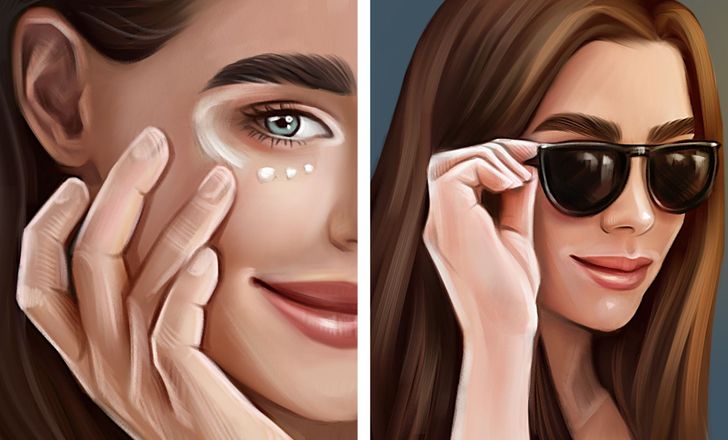
The skin around the eyes should be protected from ultraviolet rays during the summer and while you’re on vacation. It destroys collagen fibers and contributes to the appearance of wrinkles when delivered in large amounts.
In order to protect yourself from the sun, wear sunglasses with UV 400 protection and use a sunscreen with SPF no less than 30 along with the UVA/UVB marking. Such cream should be applied in a thick layer after basic care and before foundation. It’s recommended to do it no later than 15-30 minutes prior to any sun exposure.
Masking pencils and concealers
You can use special cosmetic products (like a concealer) for correcting significant imperfections like puffiness, dark circles, and under-eye bags. However, they’re meant to be used on regular facial skin and can cause an allergic reaction if applied to the skin around the eyes. That’s why it’s best to buy a special masking product for the area around the eyes.
Apply masking products with a thin layer, blending them with a patting motion along the orbital bone. Decorative cosmetics should be used after all other stages of care, such as washing, applying the main cream, and putting on sunscreen, have taken place.